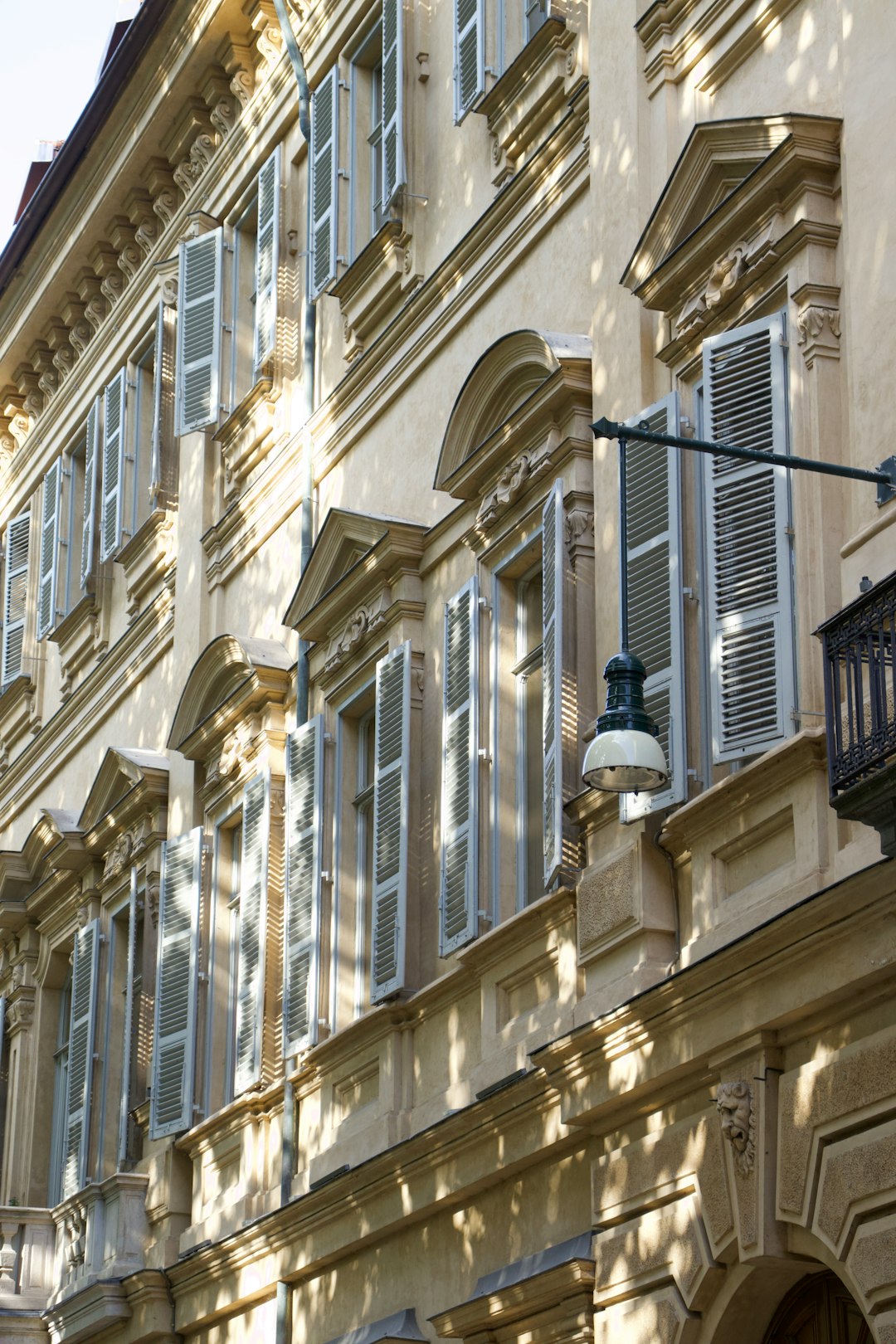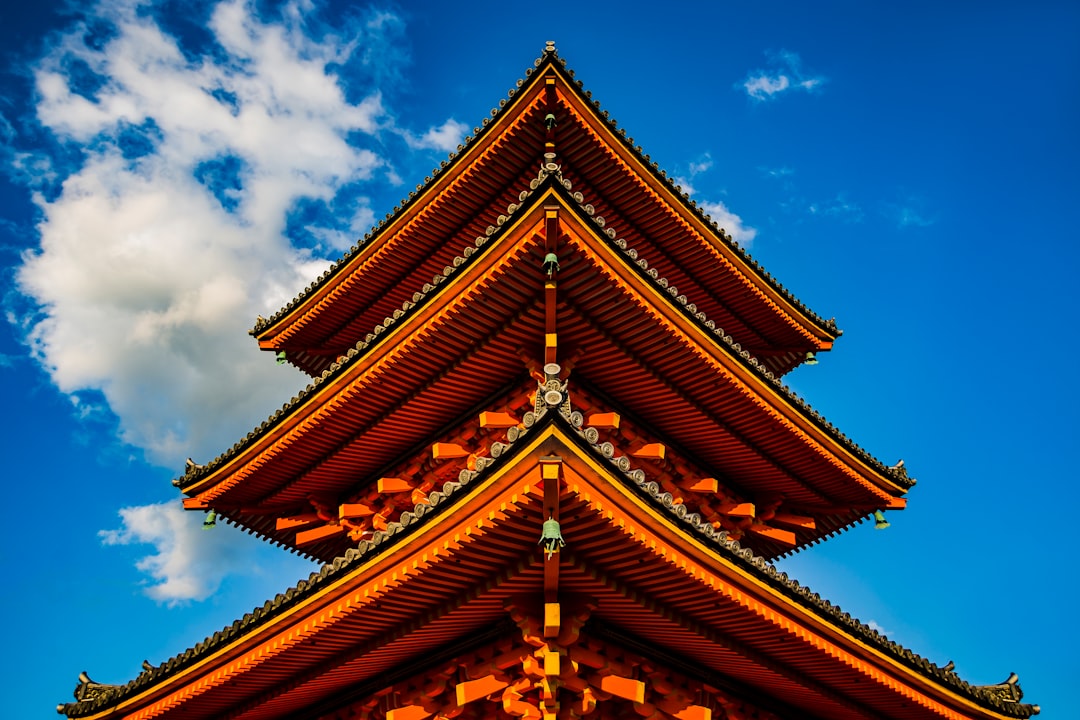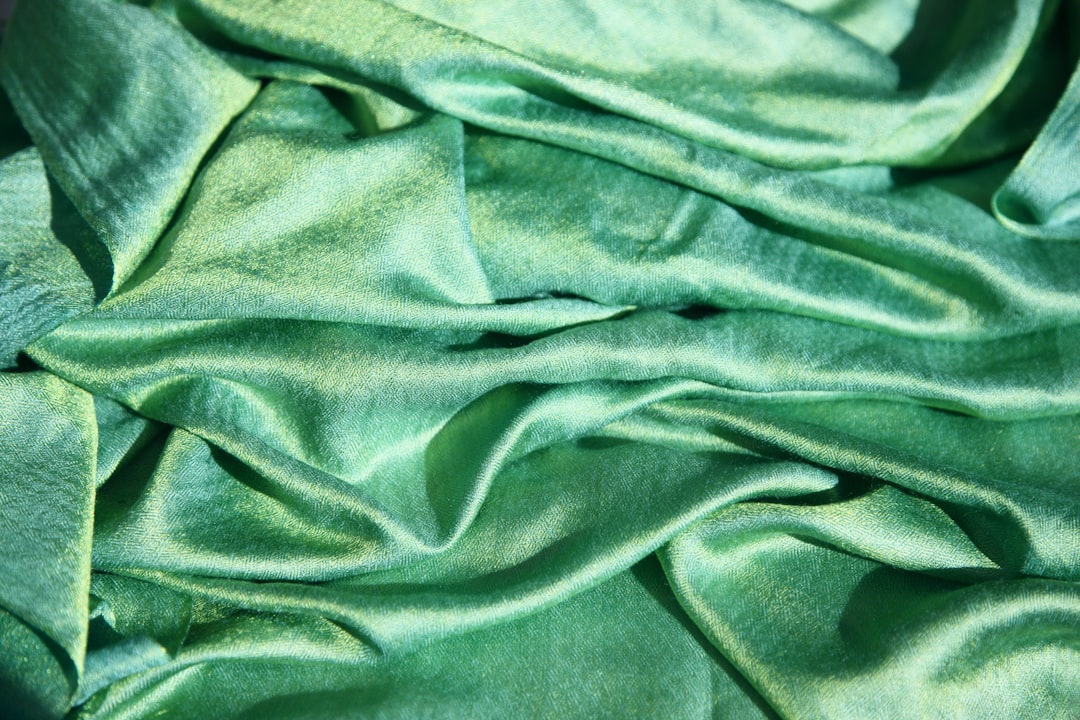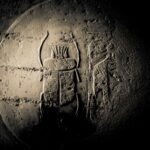Support our educational content for free when you purchase through links on our site. Learn more
Shroud of Turin Authenticity: 9 Fascinating Facts & Debates (2025) 🕵️♂️

Imagine holding a cloth that might have wrapped one of history’s most influential figures — a relic that has baffled scientists, historians, and theologians for centuries. The Shroud of Turin is exactly that: a mysterious linen bearing the faint image of a crucified man, sparking endless debates about its authenticity. Is it the genuine burial cloth of Jesus Christ, or a medieval masterpiece crafted to inspire faith?
In this deep dive, we unravel 9 key facts and controversies surrounding the Shroud’s origin, from groundbreaking scientific tests like carbon dating to pollen analysis and modern imaging techniques. We’ll explore both sides of the debate, the fascinating history behind the relic, and why it continues to captivate millions worldwide. Ready to uncover the truth behind one of history’s greatest mysteries? Let’s get started!
Key Takeaways
- The Shroud’s image is unique, showing 3D properties and bloodstains consistent with crucifixion wounds, unlike any known medieval artwork.
- Carbon-14 dating (1988) suggests a medieval origin, but sample contamination and repair theories challenge this conclusion.
- Pollen and textile studies hint at Middle Eastern origins, supporting claims of authenticity.
- Scientific investigations like STURP found no evidence of paint or forgery techniques, deepening the mystery.
- The Shroud remains a powerful religious symbol, inspiring faith, art, and ongoing research.
Curious to explore more? Check out books and documentaries on the Shroud of Turin, or plan a visit to the Turin Cathedral to see this enigmatic relic firsthand!
👉 Shop related books and documentaries:
Table of Contents
- Quick Tips and Fascinating Facts About the Shroud of Turin 🔍
- Unraveling the History and Origins of the Shroud of Turin 📜
- The Science Behind the Shroud: Radiocarbon Dating and Beyond 🧪
- 5 Key Arguments Supporting the Shroud’s Authenticity ✅
- 4 Major Skeptical Perspectives Challenging the Shroud’s Authenticity ❌
- Iconography and Artistic Analysis: Could the Shroud Be a Medieval Masterpiece? 🎨
- The Role of Pollen and Textile Studies in Authenticity Debates 🌸🧵
- The Shroud in Religious and Cultural Context: Faith Meets Forensics ✝️🔬
- Modern Imaging Techniques and What They Reveal About the Shroud 📸
- Famous Experiments and Investigations: From STURP to Today’s Research Teams 🔎
- How the Shroud of Turin Influences Popular Culture and Media 🎥📚
- Tips for Visiting the Shroud of Turin Exhibit and Museum 🏛️
- Conclusion: What We Know, What We Don’t, and Why It Matters 🤔
- Recommended Links for Deep Dives into Shroud Research 🔗
- Frequently Asked Questions (FAQ) About the Shroud of Turin ❓
- Reference Links and Sources for Authenticity Studies 📚
Quick Tips and Fascinating Facts About the Shroud of Turin 🔍
The Shroud of Turin, a linen cloth bearing a faint image of a man, has captivated the world for centuries. It’s a relic that sparks intense debate and fuels the imaginations of believers and skeptics alike.
Here are some quick facts to get you started:
- The Shroud’s Image: The image on the Shroud is most visible in black and white photographic negatives, revealing a man with a beard, moustache, and shoulder-length hair. The image shows signs of wounds consistent with crucifixion.
- Size and Material: The Shroud measures 14 feet 5 inches in length and 3 feet 7 inches in width, and is made of linen.
- Location: The Shroud is currently housed in the Chapel of the Holy Shroud in Turin, Italy.
- The Catholic Church’s Position: The Catholic Church neither endorses nor rejects the Shroud’s authenticity. They leave it to scientists to continue investigating.
- The Shroud’s History: The Shroud was first documented in 1354 in Lirey, France. It was acquired by the House of Savoy in 1453 and moved to Turin in 1578.
- The 1988 Carbon-14 Dating: This test, conducted by three independent laboratories, dated the Shroud to AD 1260–1390 with 95% confidence. However, some critics argue that the samples might have been contaminated or taken from a medieval repair.
But wait, there’s more! The Shroud’s story is full of twists and turns. Did you know that the Shroud was damaged by fire in 1532? Or that it was first photographed in 1898, revealing the negative image?
Let’s delve deeper into the history and science behind this enigmatic relic.
Unraveling the History and Origins of the Shroud of Turin 📜

The Shroud of Turin’s history is shrouded in mystery, with claims and counterclaims swirling around its origins.
Early Mentions and the Road to Turin
- First Documented Mention: The Shroud was first mentioned in 1354 in Lirey, France, where it was displayed as a relic.
- Forgery Accusations: In 1389, Bishop Pierre d’Arcis of Troyes denounced the Shroud as a forgery.
- Acquisition by the House of Savoy: The Shroud was acquired by the House of Savoy in 1453, a powerful Italian dynasty.
- The 1532 Fire: A fire in Chambéry, France, damaged the Shroud in 1532.
- Arrival in Turin: The Shroud was moved to Turin in 1578, where it has remained ever since.
- Transfer to the Catholic Church: In 1983, ownership of the Shroud was transferred to the Catholic Church.
The Shroud’s Journey: A Tale of Emperors, Kings, and Fires
The Shroud’s journey is a fascinating tapestry woven with threads of history, faith, and politics. Some historians believe that the Shroud was owned by Byzantine emperors and disappeared during the Sack of Constantinople in 1204.
But how did it end up in Lirey, France, in the 14th century?
The Shroud’s journey is a puzzle with missing pieces. We know that it was displayed in Lirey, but how it got there is a matter of speculation.
The Shroud’s history is a story of loss, preservation, and the enduring power of faith.
The Science Behind the Shroud: Radiocarbon Dating and Beyond 🧪
The Shroud of Turin has been subjected to rigorous scientific scrutiny, with researchers using a variety of techniques to unravel its secrets.
The 1988 Carbon-14 Dating: A Controversial Turning Point
- The Test: In 1988, three independent laboratories conducted carbon-14 dating on the Shroud, which placed its origin between AD 1260–1390.
- The Controversy: This dating challenged the traditional belief that the Shroud was the burial cloth of Jesus, who died around AD 33.
- Criticisms: Some critics argue that the samples used for the carbon-14 dating might have been contaminated or taken from a medieval repair.
Beyond Carbon-14: Other Scientific Investigations
- The Shroud of Turin Research Project (STURP): This project, conducted in 1978, used a variety of scientific techniques to examine the Shroud, including microscopy, spectroscopy, and X-ray analysis.
- Pollen Analysis: Pollen analysis has revealed the presence of pollen from various regions, including the Middle East, Europe, and North Africa.
- Blood Analysis: Bloodstains on the Shroud have been analyzed, and some researchers believe they are consistent with the wounds of a crucified man.
The scientific evidence surrounding the Shroud is complex and often contradictory.
While the carbon-14 dating has cast doubt on the Shroud’s authenticity, other scientific studies have provided intriguing insights.
5 Key Arguments Supporting the Shroud’s Authenticity ✅
Despite the 1988 carbon-14 dating, many people believe that the Shroud of Turin is authentic. Here are five key arguments they use to support their claims:
- The Image’s Uniqueness: The image on the Shroud is unlike any other known image from the time period. It’s not a painting or a drawing, but a faint, three-dimensional image that appears to be imprinted on the linen.
- The Bloodstains: The bloodstains on the Shroud have been analyzed and found to be consistent with the wounds of a crucified man. The blood type is AB-positive, which is rare.
- The Pollen Evidence: Pollen analysis has revealed the presence of pollen from plants that are native to the Middle East, including Jerusalem.
- The Roman Coins: Some researchers claim to have found images of Roman coins minted by Pontius Pilate on the eyes of the Shroud.
- The Sudarium of Oviedo: The Sudarium of Oviedo is a cloth that is believed to have been placed on the face of Jesus after his crucifixion. It has similar bloodstains and pollen to the Shroud of Turin.
These arguments are compelling, but they are not without their critics.
The Shroud’s authenticity remains a subject of ongoing debate.
4 Major Skeptical Perspectives Challenging the Shroud’s Authenticity ❌
While some believe the Shroud of Turin is authentic, others are skeptical. Here are four major arguments they use to challenge its authenticity:
- The Carbon-14 Dating: The 1988 carbon-14 dating placed the Shroud’s origin between AD 1260–1390, which is centuries after the time of Jesus.
- The Image’s Origin: Skeptics argue that the image on the Shroud could have been created using medieval techniques, such as painting or rubbing.
- The Bloodstains: Some skeptics argue that the bloodstains on the Shroud could have been added later, or that they are not consistent with the wounds of a crucified man.
- The Pollen Evidence: Skeptics argue that the pollen found on the Shroud could have been introduced later, or that it is not conclusive evidence of the Shroud’s origin.
These skeptical perspectives raise important questions about the Shroud’s authenticity.
The debate over the Shroud’s authenticity is likely to continue for many years to come.
Iconography and Artistic Analysis: Could the Shroud Be a Medieval Masterpiece? 🎨
The Shroud of Turin’s image has sparked debate among art historians and iconographers. Some argue that the image is too realistic to be a medieval forgery, while others contend that it bears the hallmarks of medieval artistic conventions.
The Shroud’s Image: A Realistic Depiction or a Medieval Convention?
- Realistic Features: The Shroud’s image depicts a man with a beard, moustache, and shoulder-length hair, features that are consistent with depictions of Jesus in medieval art.
- Anatomical Inconsistencies: However, the image also exhibits anatomical inconsistencies, such as disproportionate limbs and an unrealistic posture.
- Artistic Conventions: Some art historians argue that the Shroud’s image reflects medieval artistic conventions, such as the use of idealized proportions and the emphasis on symbolic details.
The Shroud’s image is a complex and fascinating subject that continues to be debated by art historians and iconographers.
Could the Shroud be a medieval masterpiece, a testament to the artistic skill of its creator?
The Role of Pollen and Textile Studies in Authenticity Debates 🌸🧵
Pollen analysis and textile studies have played a significant role in the debate over the Shroud of Turin’s authenticity.
Pollen Analysis: A Window into the Shroud’s Past
- Pollen Evidence: Pollen analysis has revealed the presence of pollen from various regions, including the Middle East, Europe, and North Africa.
- Interpretations: Some researchers argue that the pollen evidence supports the Shroud’s authenticity, suggesting that it traveled through these regions.
- Skeptical Perspectives: Others argue that the pollen could have been introduced later, or that it is not conclusive evidence of the Shroud’s origin.
Textile Studies: Unraveling the Shroud’s Fabric
- Textile Analysis: Textile studies have examined the Shroud’s weave, fibers, and dyes.
- The Herringbone Weave: The Shroud’s herringbone weave is unusual for the time period, and some researchers argue that it is not consistent with burial cloths from the time of Jesus.
- The Linen’s Origin: The linen used for the Shroud has been analyzed, and some researchers believe it is consistent with linen from the Middle East.
Pollen analysis and textile studies have provided valuable insights into the Shroud’s history and origins.
However, the evidence is often open to interpretation, and the debate over the Shroud’s authenticity continues.
The Shroud in Religious and Cultural Context: Faith Meets Forensics ✝️🔬
The Shroud of Turin is not just a historical artifact; it is also a powerful religious symbol.
The Shroud’s Religious Significance
- Veneration: For many Christians, the Shroud is a sacred relic that represents the suffering and death of Jesus Christ.
- Pilgrimage: The Shroud has been a destination for pilgrimages for centuries, with people traveling from all over the world to see it.
- Devotion: The Shroud has inspired countless works of art, music, and literature.
The Shroud’s Cultural Impact
- The Debate: The debate over the Shroud’s authenticity has sparked a wider conversation about faith, science, and the nature of evidence.
- The Media: The Shroud has been the subject of numerous documentaries, books, and articles.
The Shroud of Turin is a powerful symbol that transcends religious and cultural boundaries.
It is a reminder of the enduring power of faith and the enduring mystery of human history.
Modern Imaging Techniques and What They Reveal About the Shroud 📸
Modern imaging techniques have provided new insights into the Shroud of Turin, revealing details that were previously invisible to the naked eye.
The Shroud’s Image: A Closer Look
- Ultraviolet Photography: Ultraviolet photography has revealed details of the Shroud’s image that are not visible in visible light.
- Infrared Imaging: Infrared imaging has revealed the presence of pigments and dyes that were used to create the Shroud’s image.
- 3D Imaging: 3D imaging has allowed researchers to create a three-dimensional model of the Shroud’s image, providing a more accurate representation of the man’s body.
These modern imaging techniques have provided valuable insights into the Shroud’s image, but they have also raised new questions.
The debate over the Shroud’s authenticity continues to evolve as new technologies emerge.
Famous Experiments and Investigations: From STURP to Today’s Research Teams 🔎
The Shroud of Turin has been the subject of numerous experiments and investigations, with researchers from around the world seeking to unravel its secrets.
The Shroud of Turin Research Project (STURP)
- The Project: The Shroud of Turin Research Project (STURP) was a multidisciplinary team of scientists who conducted a comprehensive study of the Shroud in 1978.
- The Findings: STURP’s findings were controversial, with some researchers concluding that the Shroud’s image was not created by any known artistic technique.
Other Notable Investigations
- The 1988 Carbon-14 Dating: This test, conducted by three independent laboratories, dated the Shroud to AD 1260–1390.
- The 2002 Turin Shroud Center: This center was established to continue research on the Shroud, using modern imaging techniques and scientific methods.
The research on the Shroud of Turin is ongoing, with new discoveries being made all the time.
The Shroud continues to be a source of fascination and debate for scientists, historians, and theologians alike.
How the Shroud of Turin Influences Popular Culture and Media 🎥📚
The Shroud of Turin has captured the imaginations of artists, writers, and filmmakers, inspiring countless works of art, literature, and film.
The Shroud in Art and Literature
- Paintings: The Shroud has been the subject of numerous paintings, including Leonardo da Vinci’s “Last Supper” and Michelangelo’s “The Last Judgment.”
- Literature: The Shroud has been featured in novels, poems, and plays, including Dan Brown’s “The Da Vinci Code.”
The Shroud in Film
- Documentaries: There have been numerous documentaries about the Shroud, exploring its history, science, and religious significance.
- Fiction Films: The Shroud has also been featured in fiction films, such as “The Da Vinci Code” and “The Shroud.”
The Shroud of Turin is a powerful symbol that continues to resonate in popular culture.
It is a reminder of the enduring power of mystery and the enduring fascination with the past.
Tips for Visiting the Shroud of Turin Exhibit and Museum 🏛️
If you’re planning a trip to Turin, Italy, to see the Shroud of Turin, here are some tips to make your visit as enjoyable and meaningful as possible:
- Book Your Tickets in Advance: The Shroud of Turin is a popular attraction, so it’s essential to book your tickets in advance to avoid disappointment.
- Plan Your Visit: The Shroud is displayed in the Chapel of the Holy Shroud, which is located in the Cathedral of St. John the Baptist in Turin.
- Dress Respectfully: The Cathedral is a place of worship, so it’s important to dress respectfully.
- Allow Time for Reflection: Take some time to reflect on the Shroud’s history, significance, and the questions it raises.
Visiting the Shroud of Turin is a unique and unforgettable experience.
It is a chance to see a relic that has captivated the world for centuries and to reflect on the enduring power of faith and mystery.
Conclusion: The Shroud of Turin — Mystery, Faith, and Science Intertwined 🤔

After diving deep into the tangled web of history, science, and faith surrounding the Shroud of Turin, one thing is clear: this relic remains one of the most fascinating and enigmatic artifacts in human history.
✅ Positives:
- The Shroud’s image is unlike any known medieval artwork, with unique 3D properties and bloodstains consistent with crucifixion wounds.
- Pollen and textile analyses suggest origins in the Middle East, aligning with the historical context of Jesus’ burial.
- Modern scientific investigations, including STURP and recent X-ray crystallography, have challenged the medieval forgery narrative.
- The Shroud continues to inspire faith, art, and scholarship worldwide.
❌ Negatives:
- The 1988 carbon-14 dating controversially points to a medieval origin, though this has been questioned due to possible contamination and sample issues.
- Anatomical inconsistencies and some forensic critiques raise doubts about the image’s formation and authenticity.
- The historical record has gaps, especially between the 1st century and its first documented appearance in the 14th century.
So, is the Shroud authentic? The answer is still elusive. The carbon dating controversy, combined with compelling scientific and historical evidence, leaves the door open for both believers and skeptics.
At History Hidden™, we recommend approaching the Shroud with curiosity and respect — it’s a relic that invites you to explore history, science, and faith all at once. Whether you see it as a miraculous artifact or a masterful medieval creation, the Shroud of Turin continues to captivate and challenge us.
Ready to explore more? Keep digging into the fascinating world of relics and legends with our Folklore and Legends and Mythology Stories collections.
Recommended Links for Deep Dives into Shroud Research 🔗
- Jean-Christian Petitfils’ Book: Le Saint Suaire de Turin, l’enquête définitive! — Amazon
- Giulio Fanti’s Research and Publications: University of Bologna
- Shroud of Turin Research Project (STURP) Archives: STURP Official
- The Sudarium of Oviedo: Official Site
- Radiocarbon Dating Studies: Oxford Radiocarbon Accelerator Unit
- Books on Shroud Science and History:
👉 Shop related books on Amazon:
Frequently Asked Questions (FAQ) About the Shroud of Turin ❓

What is the history of the Shroud of Turin and how has its authenticity been debated over the years?
The Shroud of Turin first appeared in historical records in 1354 in Lirey, France. It was denounced as a forgery in 1389 but later acquired by the House of Savoy and moved to Turin in 1578. Its authenticity has been debated fiercely, especially after the 1988 carbon-14 dating suggested a medieval origin. However, other scientific studies, pollen analysis, and historical links to relics like the Sudarium of Oviedo have kept the debate alive. The Catholic Church remains neutral, encouraging scientific inquiry while respecting its religious significance.
Is the Shroud of Turin a medieval forgery or does it really date back to the time of Jesus Christ?
This remains the million-dollar question. The 1988 carbon-14 dating points to a medieval origin (1260–1390 AD), but critics argue the sample tested was contaminated or taken from a repaired section. Other scientific methods, including textile analysis and pollen studies, suggest a 1st-century origin. The image’s unique properties defy easy explanation by medieval artistic techniques. So, while skeptics lean toward forgery, many researchers and believers maintain it could indeed be the burial cloth of Jesus.
What are the main arguments for and against the authenticity of the Shroud of Turin?
For authenticity:
- Unique 3D image with no known medieval artistic equivalent.
- Bloodstains consistent with crucifixion wounds and rare AB blood type.
- Pollen and dirt consistent with Jerusalem and Middle Eastern flora.
- Historical connections to other relics like the Sudarium of Oviedo.
Against authenticity:
- Carbon-14 dating suggests medieval origin.
- Anatomical inconsistencies in the image.
- Possible medieval artistic techniques could have produced the image.
- Historical gaps in the Shroud’s provenance before the 14th century.
How has the Shroud of Turin been scientifically tested and what do the results reveal about its origins?
The Shroud has undergone extensive testing:
- Carbon-14 dating (1988): Suggested medieval origin but disputed due to sample issues.
- STURP (1978): Multidisciplinary analysis found no evidence of paint or pigment, suggesting the image was not a forgery.
- Pollen analysis: Found Middle Eastern pollen, supporting an origin in that region.
- Blood analysis: Confirmed presence of hemoglobin and blood type AB.
- Textile studies: The herringbone weave is unusual for 1st-century burial cloths but not impossible.
- Modern imaging: Revealed 3D properties and no signs of brush strokes or pigments.
Can the bloodstains on the Shroud of Turin be proven to be from a crucified person, and if so, what does this mean for its authenticity?
Bloodstains on the Shroud have been analyzed and found to contain hemoglobin and serum albumin, consistent with human blood. The blood type is AB, which is rare but found in Middle Eastern populations. The pattern of wounds corresponds to crucifixion injuries, including nail wounds in the wrists and spear wound in the side. While this supports the idea that the image represents a crucified man, skeptics argue the blood could have been added later or belong to someone else. For believers, this is a powerful point supporting authenticity.
What role do the carbon dating tests play in determining the age and authenticity of the Shroud of Turin?
Carbon dating is a critical but controversial piece of the puzzle. The 1988 tests dated the Shroud to the medieval period, challenging claims of 1st-century origin. However, subsequent critiques highlighted possible contamination, sample selection from a repaired corner, and environmental factors affecting results. Newer dating methods, such as textile fiber analysis and spectroscopy, suggest an earlier date. Thus, carbon dating is important but not definitive on its own.
Are there any other relics or artifacts that have been linked to the Shroud of Turin, and what do they reveal about its history?
Yes! The Sudarium of Oviedo, a bloodstained cloth believed to have covered Jesus’ face, shares blood type AB and matching bloodstain patterns with the Shroud. The Tunic of Argenteuil also shows overlapping bloodstains. Pollen found on these relics matches that on the Shroud, supporting a shared Middle Eastern origin. These connections strengthen the argument for the Shroud’s authenticity and provide a broader context for Jesus’ burial artifacts.
How do the images and symbols on the Shroud of Turin compare to other historical accounts of Jesus’ crucifixion and burial, and what does this mean for its legitimacy?
The Shroud’s image corresponds closely with Gospel accounts of Jesus’ crucifixion: wounds on wrists and feet, scourge marks, crown of thorns, and spear wound. The presence of dirt consistent with Jerusalem’s limestone and pollen from the region adds historical credibility. However, some anatomical inconsistencies and the lack of early historical records raise questions. The Shroud’s imagery aligns with Christian iconography but also contains unique forensic details, making it a compelling but complex artifact.
How can I learn more about the Shroud of Turin and stay updated on new research?
To stay informed, follow reputable sources like the Shroud of Turin Research Project (STURP), the University of Bologna’s studies, and publications by historians like Jean-Christian Petitfils. Subscribing to newsletters and exploring academic journals on sindonology (the study of the Shroud) will keep you in the loop. Also, History Hidden™ offers ongoing coverage of relics and legends to satisfy your curiosity!
Reference Links and Sources for Authenticity Studies 📚
- Shroud of Turin – Wikipedia
- Shroud of Turin Research Project (STURP)
- University of Bologna – Giulio Fanti’s Research
- Oxford Radiocarbon Accelerator Unit
- Sudarium of Oviedo Official Site
- National Catholic Register Interview with Jean-Christian Petitfils
- Walking Humbly With God – Shroud of Turin Analysis
Explore more about relics and legends at History Hidden™:




